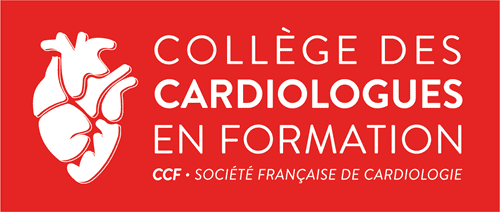Suivez nous sur les réseaux sociaux
Cet outil a vocation à informer, diffuser l’information auprès des jeunes cardiologues (internes, assistants, chefs de cliniques, jeunes praticiens, etc.), et faciliter les échanges.
Voici un aperçu rapide des sujets abordés dans cette publication :
Toutes nos publications
Une question ?
Publications
Pulmonary embolism in COVID-19 patients: a French multicentre cohort study
Voici un aperçu rapide des sujets abordés dans cette publication :
Pulmonary embolism in COVID-19 patients: a French multicentre cohort study
Charles Fauvel, Orianne Weizman, Antonin Trimaille, Delphine Mika, Thibaut Pommier, Nathalie Pace, Amine Douair, Eva Barbin, Antoine Fraix, Océane Bouchot, Othmane Benmansour, Guillaume Godeau, Yasmine Mecheri, Romane Lebourdon, Cédric Yvorel, Michael Massin, Tiphaine Leblon, Chaima Chabbi, Erwan Cugney, Léa Benabou, Matthieu Aubry, Camille Chan, Ines Boufoula, Clement Barnaud, Léa Bothorel, Baptiste Duceau, Willy Sutter, Victor Waldmann, Guillaume Bonnet, Ariel Cohen, Théo Pezel, for the Critical Covid-19 France Investigators
European Heart Journal, Volume 41, Issue 32, 21 August 2020, Pages 3058–3068
PMID: 32656565
DOI: 10.1093/eurheartj/ehaa500
Abstract
Aims
While pulmonary embolism (PE) appears to be a major issue in COVID-19, data remain sparse. We aimed to describe the risk factors and baseline characteristics of patients with PE in a cohort of COVID-19 patients.
Methods and Results
In a retrospective multicentre observational study, we included consecutive patients hospitalized for COVID-19. Patients without computed tomography pulmonary angiography (CTPA)-proven PE diagnosis and those who were directly admitted to an intensive care unit (ICU) were excluded. Among 1240 patients (58.1% men, mean age 64 ± 17 years), 103 (8.3%) patients had PE confirmed by CTPA. The ICU transfer and mechanical ventilation were significantly higher in the PE group (for both P < 0.001). In an univariable analysis, traditional venous thrombo-embolic risk factors were not associated with PE (P > 0.05), while patients under therapeutic dose anticoagulation before hospitalization or prophylactic dose anticoagulation introduced during hospitalization had lower PE occurrence [odds ratio (OR) 0.40, 95% confidence interval (CI) 0.14–0.91, P = 0.04; and OR 0.11, 95% CI 0.06–0.18, P < 0.001, respectively]. In a multivariable analysis, the following variables, also statistically significant in univariable analysis, were associated with PE: male gender (OR 1.03, 95% CI 1.003–1.069, P = 0.04), anticoagulation with a prophylactic dose (OR 0.83, 95% CI 0.79–0.85, P < 0.001) or a therapeutic dose (OR 0.87, 95% CI 0.82–0.92, P < 0.001), C-reactive protein (OR 1.03, 95% CI 1.01–1.04, P = 0.001), and time from symptom onset to hospitalization (OR 1.02, 95% CI 1.006–1.038, P = 0.002).
Conclusion
PE risk factors in the COVID-19 context do not include traditional thrombo-embolic risk factors but rather independent clinical and biological findings at admission, including a major contribution to inflammation.


